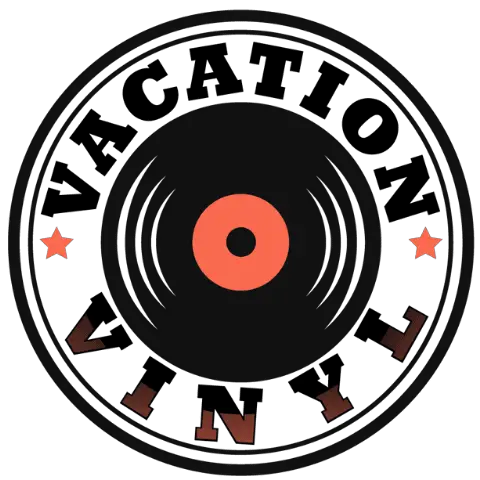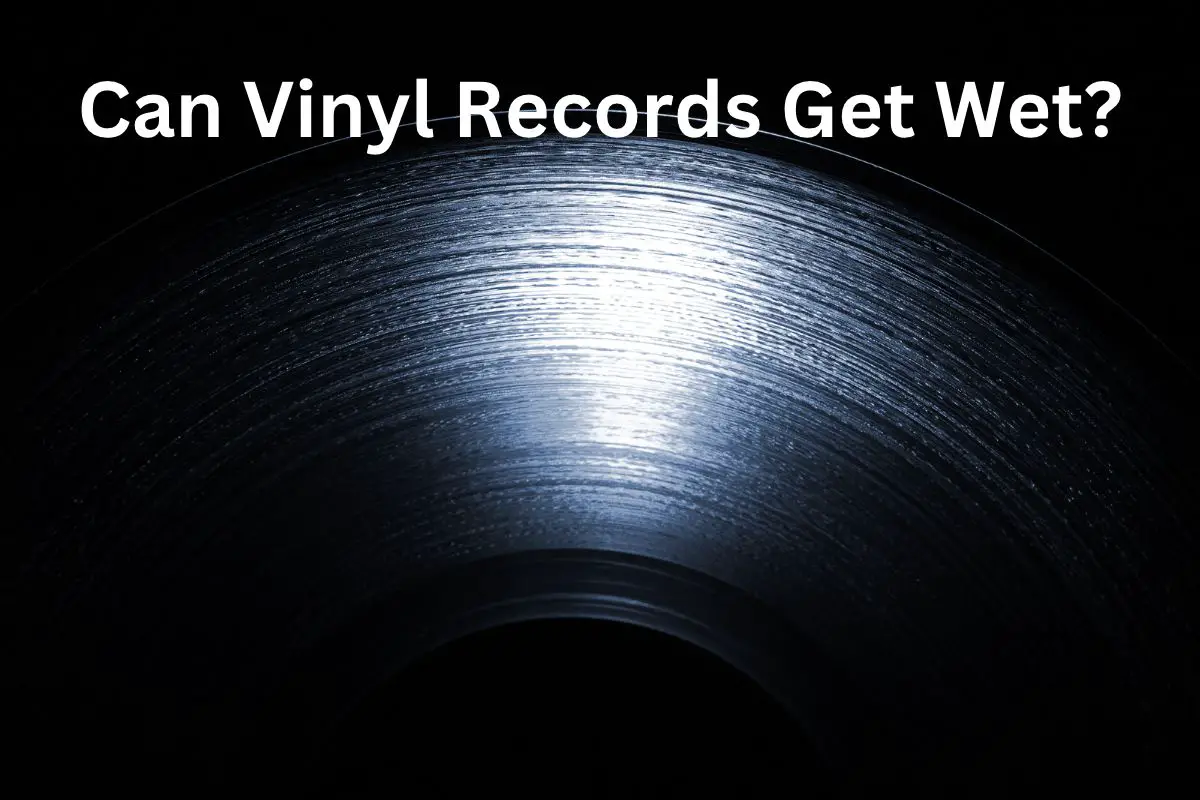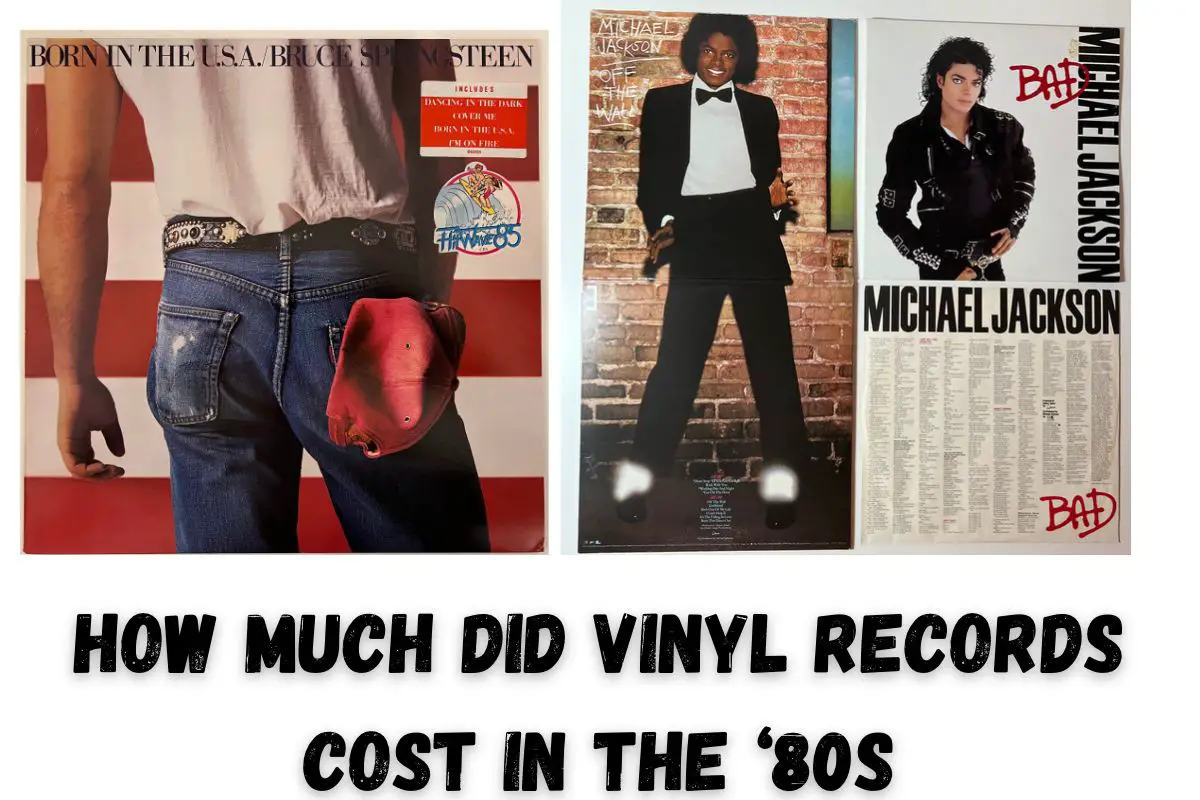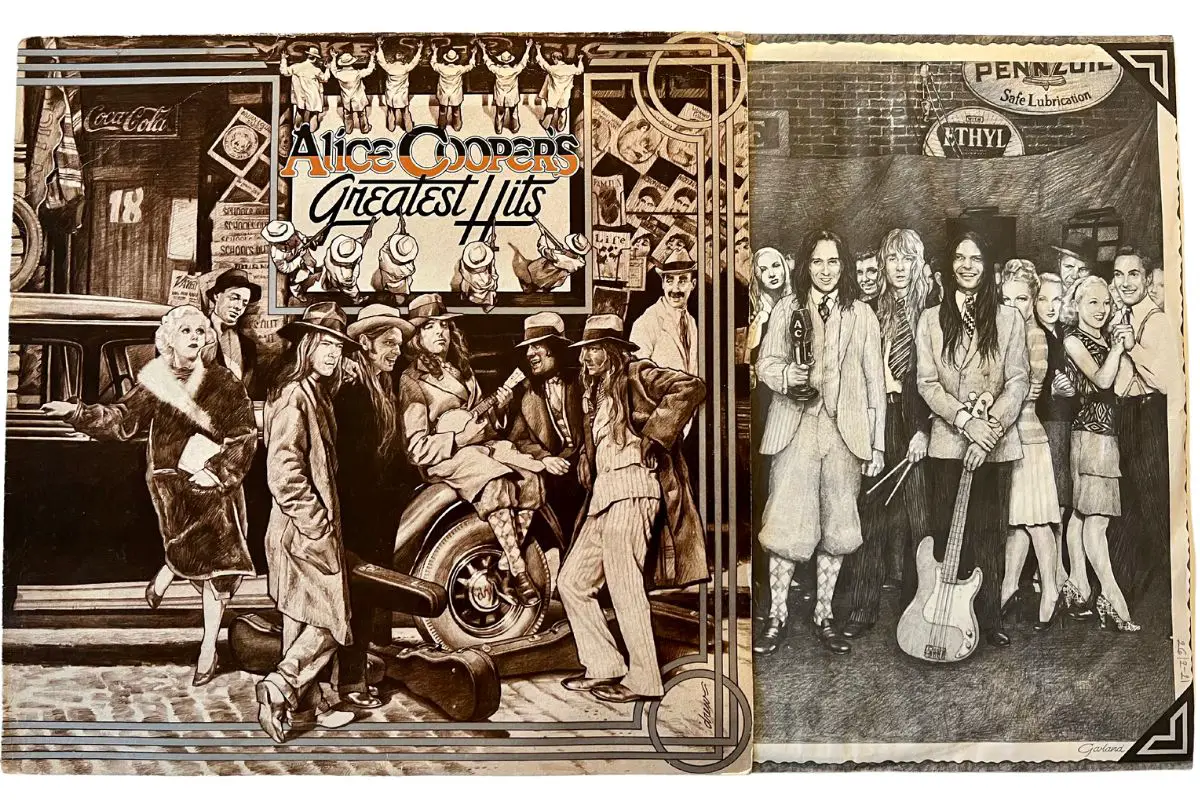This post contains affiliate links.
There’s a lot of talk about the differences between 33, 45, and 78 records. Any vinyl enthusiast in the making has had this question in mind: How can I recognize which record format fits me best? The answer is the type of record player used and the RPM of the record in question.
There are several significant things to consider to help differentiate between 33, 45, and 78 records. The first is the size of the record, the second comes down to the material, and the third includes revelations per minute (RPM).
Vinyl has been making such a comeback in the last decade or so, and it looks like it’s not stopping anytime soon. DJs and music connoisseurs aren’t the only ones thrilled to dust off their worn-out turntables. The younger generations are here for it too, and they’re in need of some vinyl 101.
It’s not possible to play any type of record on any turntable. There are record players that can play both 33s and 45s. Most of the time, a single turntable only plays one kind of record at a time.
Vinyl production has reappeared in recent times. This essentially includes 45s, also known as LPs. This format is beloved among record companies, as it can contain a full album. 33s come up in record stores or online sales, but they aren’t in demand as much.
Since 78s have been out of production for years, the chances are a turntable to play them on won’t be easy to find. Vintage turntables can do the job, but they are hard to come by and even harder to maintain.
Industry demands have a lot to do with the types of records circulating. The public is less interested in the 78s due to their obscureness and lack of proper use. This wasn’t always the case, though.
Table of Contents
History of 78 Records
The name ‘78’ comes from the number of revolutions per minute (RPM) this record plays at. It represents how many times it can spin on the record player in a single minute. In the beginning, the speeds varied from 60 to 130 RPM. (1)
Since 1894, Berliner’s Gramophone Company started selling 70 RPM 7-inch records. Later on, the standard became 78 RPM due to the speed of the manufacturing machines. It then spread throughout the entire record industry. (1)
Shellac was the material most commonly used to make 78s. It comes from a resin that lac bugs leave on trees. This resin mixes with alcohol, and a new component, shellac, gets made. (2)
Before this, companies made records from glass and zinc. These materials were too fragile and incapable of being used for mass distribution. Because shellac was sturdier and moisture-resistant, it quickly became the medium of choice. (3)
The records had grooves carved in that contained the sound info. When a gramophone needle traced the markings, it created vibrations. A speaker transferred them into sound. (3)
Vintage turntables needed a person to operate them. They were hand-cranked up until the 1910s. That was when Berliner produced the first automatic gramophone, which could play at a higher speed. (3)
The first 78s could only store about 3 to 5 minutes worth of music. They were single-sided, so the record limit was a song or two max. It wasn’t until after WW2 ended that the industry introduced vinyl records. (2)
The Invention of Vinyl Records

Because shellac wasn’t the lightest of substances, record companies were looking for other solutions. Polyvinyl chloride appeared to be the next best thing. It didn’t weigh as much, it wasn’t as noisy as shellac, and it broke less easily. (4)
Records made out of vinyl could also store more sound. The movie industry first introduced them for soundtrack purposes in 1926. The pieces of vinyl were increased to 16 inches and could play 11 minutes of sound. (4)
Their speed had to go down from 78 to 33 1⁄3 revolutions per minute. They still had the same grooves used in the original 78s. 33s also came in acetate form, which the radio industry was using to tape their shows at the time. (4)
The sound of the 33s was incomparably better than the one coming out of the 78s. Vinyl didn’t make as much noise when the needle was pressing onto it. Both the public and the music industry loved it, so they researched making even longer playing records. (4)
The LP (Long Play) came into existence in 1948. It played at 33 RPM, and it appeared in 2 formats: 10 inches and 12 inches. The 45 arrived a year later, as competition to the LP. It was smaller (7-inch), yet the grooves were closer together. (4)
The record company RCA Victor also released EPs (Extended Play) as 45s. It didn’t catch on at the time – the 45s replaced the 78s for singles only. As music artists gained popularity, their audiences wanted more from them. Fewer singles and more albums turned out to be the recipe for success, and little by little, the 78s lost traction. (4)
78s Vs. 45s
The similarities between the 78s and the 45s are apparent: both records play music by having the turntable trace their grooves with its needle. They can also appear in the same size: 10 or 12 inches. Both 45s and 78s come from either shellac or vinyl. However, it’s their dissimilarities that matter here.
|
attribute/record type |
78 |
45 |
|---|---|---|
|
size |
10/12 inches |
10/12 inches |
|
speed |
78 RPM |
45 RPM |
|
sound |
acoustic, loud |
elegant, full |
|
max. playing time |
5 minutes |
60 minutes |
|
sides |
single-sided |
two-sided |
|
LP/EP |
no |
yes |
|
channel |
mono |
hi-fi |
Besides the speed, the most notable contrast is the amount of playing time the record holds. The 78 couldn’t hold more than 5 minutes of recorded sound, so it became obsolete. The 45 contained microgrooves with a closer imprint in the vinyl than on a 78.
The microgrooves ensured more music per side, plus both of the sides were playable, unlike on the 78. It gave rise to a new way of releasing music, so LPs and EPs were born. Artists had more to say, and their fans could enjoy their tunes for longer.
45s had intricate art on their covers to convey the messages the albums carried. Creatives connected to people from all over the world via this new medium.
The sonic quality of the 45s was much richer compared to the 78s. Though vinyl scratched more due to its lightness, its surface didn’t create noise. With less room for dissonance, the public embraced the 45s wholeheartedly.
Turntable companies recognized this movement too. 45s were smaller, so they took up less space than 78 RPM records. A new generation of record players flooded the market. (2)
It’s tricky to locate a vintage record player that plays 78s. If you stumble upon these types of records, invest in a 78 adaptor that switches the pulleys within the turntable. Only then will the turntable be able to play at 78 revolutions per minute. (2)
78s Vs. 33s
Mass manufacture of the 78s didn’t stop until the 1950s. Children’s records seem to be the last types of 78s ever produced back in the 1970s. (5)
33s and 45s became more and more sought-after. Every home had a record player, and everyone had their genre of choice. From rock and roll to gospel and soul, all recording artists released their new music in this way.
As opposed to predominantly acoustic 78s, the industry started using new technology to record. Electrical recordings used a microphone to convert vibrations to an electrical signal, which connected to a stylus. A stylus cut through the surface of the record, leaving a groove behind. (5)
Although the 33s typically don’t hold as much music as the 45s, they helped get rid of the 78s. 33s played for around 20 minutes per side in the beginning. Later on, they could store up to 60 minutes’ worth of music. (1)
33s and 78s share the same size: they came in 10 or 12-inch formats. They play at opposing speeds, the first at 33 RPM and the latter at 78.
As far as material is concerned, 78s consisted of shellac. 33s could be vinyl or lacquer-covered recordings. 78s and 33s share a resemblance but have a different feel to them.
45s Vs. 33s
The 78 recording was the predecessor to the 45 and the 33. It couldn’t compete with modern times as well as the other two for several reasons. Shellac used to produce the 78 was difficult to work with and even harder to take care of. The records were wide and large, thus incompatible with newer turntables.
The 45s and the 33s stored more sound information, making them ideal for recording more than just singles. They both contained microgrooves made out of vinyl. It also meant the sound was smoother, as it allowed for high-fidelity. (2)
The most significant difference between the two was in their size. The 45 was smaller than the 33; it was a 7-inch record, while the 33 was 10 or 12. They also varied in speed – the 33 was slower than the 45.
45 records were more popular than the 33s because of LPs. They allowed for full album versions instead of more individual songs per side. Because 45s played faster, they sold better.
Record companies competed using 33 and 45 RPM records. Marketing strategies tried to distinguish between the two, though the similarities were unmistakable. Over time, 33s fell into obscureness.
45s still sell nowadays. They aren’t reserved for vinyl collectors only; they appear across all genres of popular music. Their recent comeback was unexpected.
Revival of Vinyl Records

Ever since the 1990s, records of all kinds started coming back into fashion. Music lovers couldn’t get enough of old recordings of late artists, vintage special editions, 80s records, etc. What nobody saw coming was the value vinyl has created for new listeners.
We’re all fond of nostalgic items that bring us back to happier times. Ticket stubs from a great movie or worn-out letters from dear friends make us feel emotions we haven’t felt in a while. Vinyl records touch that same spot with their retro charm.
Record companies stopped making vinyl because of the emergence of the CD in the late 1980s. Records didn’t sell as well as they used to, and the audiences were more interested in digital than analog formats. (6)
It all changed with subcultures and the steady rise of alternative scenes. They embraced what mainstream popular music was trying to shut down. Their roots stemmed from a real place, which included playing records.
Not all of the records produced throughout history found their way back to modern turntables. 33s were less famous than the LPs. 78s were unplayable except for the selected few who boasted with legitimate equipment.
45 RPM recordings combined the best of both worlds. They represented a connection to history while holding space for the contemporary to thrive. That’s why the industry still produces them today. It might also be the reason to keep them in their plans for the future, who’s to say?
In 2020, US-based vinyl lovers bought 27.5 million LPs. It was almost double the number of LPs sold the previous year. It was more than 30 times more compared to 2006 when the vinyl comeback began. (7)
While 78s didn’t make the cut to this century, 33s and 45s did. Because of their devotion to creativity, 45s hold a special place on crates diggers’ shelves. With their nuanced covers and elaborate narratives, they tell stories other music formats don’t.
Format Wars
Before records became such a hit, radio reigned the airwaves. Everybody had a radio receiver back then so they could tune into their favorite stations. It was the prime source of news, music, and entertainment.
The industry developed 8-tracks and cassettes using magnetic sound recording technology. They could be played via radios, and later on, walkmans. Both 8-tracks and cassettes were well-liked, yet not enough to survive in the 21st century. (8)
Tapes weren’t enough to please true music enthusiasts who wanted to experience their music. Records came along, first the 78s, then the 33s and 45s. They ruled over the music market for decades.
Everything changed when digital came into play. In 1982, Sony and Philips released the compact disc or the CD. It enabled digital encoding of sound using laser technology into a small round piece of plastic. (9)
The CD could store much more audio info than any type of record. Lots of famous artists switched onto releasing CDs only already during the 1980s. There was a side to it that took the recording companies by surprise, and it had to do with its price.
Who doesn’t remember PCs with CD burners (or friends who owned them)? It was a shortcut to getting an album you’d wanted but didn’t have to pay for it. As soon as the music industry took notice, it was already too late. Record companies lost a lot of money, and artists started suing for copyright infringement. (9)
MP3s took this on a whole other level. The industry compressed music into this format that was even more digital than CD; it was intangible. MP3s roamed around the internet and its various sharing platforms, such as LimeWire. There was no way to control their fluctuation or the fact that very few people paid for them. (9)
Digital music formats competed with one another, but they could never replace the feeling of a recording. The emotional attachment was greater than any ease of access. In the long run, analog won. It didn’t even matter if the records in question were 45s, 33s, or 78s, as long as they played.
How To Play 33/45/78 Records
To play your favorite 33s and 45s, all you need is a decent record player. Make sure to check the speed setting since 33s play at a slower speed than 45s. As for the rest of the equipment, use what you normally would: your speakers, as well as amps and preamps.
For 12-inch records, it isn’t necessary to adjust the speed. These are primarily 33s, though a few 45s come in this size as well. If you’re in possession of a 7-inch record, meaning a 45, change the speed setting to 45 RPM. (4)
This procedure isn’t as simple when it comes to 78 recordings. The first thing you need to take into account is choosing a turntable that ranges between 60 and 90 RPM. Remember, 78s play at a higher speed, but not all of them are set precisely at 78. (10)
The cartridge needs to be stereo, and the styli needs to have a tip so as to play the 78 records. You’ll also need an amp that has a mono as well as a stereo set. Last but not least, plug in your favorite speakers – just because the record is old, it doesn’t mean the sound will disappoint. (10)
It’s also possible to use adaptors which insert into the records to play them. It’s probably not any day that you’re able to play a vintage record, so take all the steps to ensure a quality experience.
There are certain things to bear in mind when choosing between 45s, 33s, and 78s. Each of these has its advantages and disadvantages upon playing and handling.
Pros and Cons of 33s/45s/78s
33 and 45 recordings share a lot of the same benefits. They’re usually made of vinyl, have more playing time than the 78s, and are compatible with most turntables. On the other side, they shatter and scratch more easily.
Pros of 33 Records:
- Lacquer-based 33s are more resistant to scratches
- Good sound quality
- Longer playing time than 78 RPM recordings
- Vinyl-based 33s have hi-fi sounds
- Two-sided
Cons of 33 Records:
- Larger than 45s – mostly come in sizes of 10 or 12 inches, meaning not all record players can play them
- 20 minutes of playing time, which is less than the 45s (no possibility of LPs/EPs)
- Slowest RPM
45s are in demand for a reason. They stood the test of time because of their many qualities, such as long play time and smaller size.
Pros of 45 Records:
- Smallest size out of all the records (7-inch)
- Made out of vinyl, a lighter material than shellac
- Good sound quality
- Long play time (60 minutes), which enabled the release of LPs and EPs
- High fidelity sounds
- Two-sided
Cons of 45 Records:
- Vinyl scratched easily and wasn’t resistant to moisture
- Not compatible with all turntables due to small size
- Alterations to original music due to scratches
Even though it had its faults, the 78 was a beloved record format for a very long time. It had certain advantages over the 33 and 45 due to its physicality.
Pros of 78 Records:
- Shellac didn’t allow records to warp
- Moisture-resistant
- Scratch-resistant due to the hard exterior
- Unaltered original music
- Quickest RPM
Cons of 78 Records:
- Limited playing time – 3 to 5 minutes, only singles could be released on 78s
- Large in size – 10 to 12 inches
- Single-sided only
- Larger grooves collected more dust within the records
- Easily shattered
- Compromised sound quality
- Mono sound only
33s, 45s, and 78s each had their own time when they were the record of choice. A hundred years ago, nobody could imagine spending their every day without playing a 78 on a jukebox. Genres such as jazz wouldn’t have the platform as they had with the 78 on its side.
Due to their nature, the 78s didn’t have a long shelf life. They were only good for releasing singles, and their primary substance, shellac, wasn’t sustainable.
33s and 45s stepped in the recordings game in the 1940s and are still going strong. They have gone from unnecessary to nostalgic to acceptable anywhere. Without LPs, many music artists would never have the chance to communicate their message to the world.
33 recordings weren’t as well-loved as 45s because of their limited playing time. They still had credit with their audience and continue to be valued collector’s items today.
45 RPM records have more pros than cons in regards to the trace they’ve left on music. Without them, there wouldn’t be as much attachment to vinyl as we know it today. They’re an integral part of the culture of not only music but art as a whole.
Significance of 33/45/78 Records
Shellac and vinyl records combined have made an impact on the music industry and the public alike. No other format in the history of music has had such an extent as recordings have.
There’s something warm about records that isn’t there with other analog options. Records feel like a safe harbor, and playing them is a process. It isn’t always easy, but we need it so we can feel the music.
33s and 45s outlived 78s, but they also outlived CDs, 8-tracks, and cassette tapes. There was never an interconnectedness with the latter as there is with records. This is especially true for wax records, which still spin today.
The future of recordings may be uncertain, but it’s there. 45s, in particular, have shown that they’ve got an audience that isn’t going anywhere. Even the younger generations are willing to learn how to play records and keep their story going.
Artists around the globe are able to take part in this interchange of feelings and memories vinyl brings with it. They don’t have to settle for a medium that doesn’t resonate, nor do their fans. It goes for the content that’s on the record cover, as well as the one that goes within.
With such attention to detail, it’s no wonder records went through their renaissance. There isn’t a single other format like that in our recent history that got the recognition vinyl has. It was all thanks to the public that wanted more out of their music.
Markets follow the needs of their consumers. It’s soothing to know that there’s power in the decision-making process behind how we enjoy music. It’s not all about making money; there’s something in expressing the right sentiment. 33, 45, and 78 records can do that and much more.
Which Record Is Better: 33, 45, or 78
The answer to the question which record out of these three is the best one comes down to your personal preferences. If you don’t mind playing a single song at a time, go for the 78 record. This is best advised to classical music lovers who don’t have a problem with less-than-perfect sound quality. 78s are difficult to come by and need the proper TLC and an adequate turntable to play them.
33s and 45s are the record formats to go for if you’re in the mood for an authentic listening experience. Take a walk down memory lane and see for yourself what it was like to immerse yourself in the music of your choice. Accompany either of these with a suitable record player and watch the magic unfold.
- https://en.wikipedia.org/wiki/Phonograph_record
- https://sumikophonocartridges.com/78-rpm/
- https://www.thoughtco.com/emile-berliner-history-of-the-gramophone-1991854
- https://en.wikipedia.org/wiki/LP_record
- https://web.library.yale.edu/cataloging/music/historyof78rpms
- https://en.wikipedia.org/wiki/Vinyl_revival
- https://www.statista.com/chart/7699/lp-sales-in-the-united-states/
- https://en.wikipedia.org/wiki/8-track_tape
- Casey Rae: “Music Copyright: An Essential Guide for the Digital Age”, p.30
- Roger Beardsley: “A Guide To Playing 78rpm Records” (https://www.charm.rhul.ac.uk/history/p20_4_6.html)
VacationVinyl.com is a participant in the Amazon Services LLC Associates Program, an affiliate advertising program designed to provide a means for sites to earn advertising fees by advertising and linking to Amazon.com. We also participate in other affiliate programs which compensate us for referring traffic.




